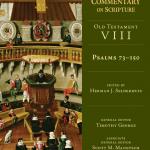If we have to identify the largest single influence on the Epistle to Diognetus it would have to be the Apostle Paul.[1] Ernst Dassman comments that, ‘The utilization of Pauline theology reaches an astonishing intensity in the epistle to Diognetus’[2] and ‘not merely in the abundance of Pauline terminology, which the author cites or paraphrases into his own account, but rather in the exposition of central concerns found in Pauline theology.’[3] Similarly, Charles Nielsen states that ‘Pauline influence appears not only very often but also at crucial points where the actual definition of Christianity is at stake.’[4]
Although the only explicit citation of Paul is in the homiletic section (Diogn. 12.5 = 1 Cor. 8.1), even so, the whole of Diogn. is permeated with Pauline allusions and echoes. The Paulinisms are the most apparent when it comes to a critique of circumcision (Diogn. 4.1, 4 = Phil. 3.2-5; Rom 2.17, 25-29), the depiction of Christians as possessing a heavenly citizenship (Diogn. 5.9 = Phil. 3.20), the rhetorical appeal to their mistreatment in the world (Diogn. 5.8-17 = 2 Cor. 6.8-10), their custodianship of a divine mystery (Diogn. 10.7 = 1 Cor. 2.1, 7; Col. 2.2), the contrast between Spirit and flesh (Diogn. 5.8, 6.5-6 = Romans 7–8; Galatians 4–5), and the announcement of God saving the lawless and unrighteous by sending the Son of God who by his righteousness could justify them (Diogn. 9.1-5 = Rom 3.24-26, 4.4-5, 5.6-8, 6.23, 8.3, 32, Gal. 4.4, Tit 2.14, 3.4). The author attempts to rise up to meet the challenge of the cultural despisers of the Christian religion in the Graeco-Roman world and he employs Pauline motifs to that end.
[1] Rudolf Brändle, Die Ethik der ‘Schrift an Diognet’: Eine Wiederaufnahme paulinischer und johanneischer Theologie am Ende des zweiten Jahrhunderts (ATANT, 64; Zurich: Theologischer Verlage, 1975), 206-16; Andreas Lindemann, ‘Paulinische Theologie im Brief an Diognet’, in Kerygma und Logos: Beiträge zu den geistesgeschichtlichen Beziehungen zwischen Antike und Christentum (FS Carl Andresen; ed. A.M. Ritter; Göttingen: Vandenhoeck & Ruprecht, 1979), 337-50; Ernst Dassman, Der Stachel im Fleisch: Paulus in der frühchristlichen Literatur bis Irenäus (Münster: Aschendorff, 1979), 254-59; Rolf Noormann, ‘Himmelsbürger auf Erden: Anmerkungen zum Weltverhältnis und zum “Paulinismus” des Auctor ad Diognetum,’ in Die Weltlichkeit des Glaubens in der Alten Kirche, eds. B. Aland, C. Schäublin, D. Wyrwa, U. Wickert (BZNW, 85; Berlin: Walter de Gruyter, 1997), 199-229; Michael F. Bird, ‘The Reception of Paul in the Epistle to Diognetus,’ in Paul in the Second Century, eds. M.F. Bird and J.R. Dodson (LNTS 412; London: T&T Clark, 2011), 70-90; Matthew Thomas, Paul’s ‘Works of the Law’ in the Perspective of Second Century Reception (WUNT 2.468; Tübingen: Mohr/Siebeck, 2018), 119-21.
[2] Dassman, Der Stachel im Fleisch, 254 (‘Zu einer erstauntliche Intensität gelangt die Verwertung paulinischer Theologie dann bereits im Diognetbrief.’)
[3] Dassman, Stachel im Fleisch, 255 (‘nicht allein die Fülle paulinischer Wendungen, die der Verfasser zitierend oder paraphrasierend in die eigene Darstellung einfließen läßt, sondern ein Eingehen auf zentrale Anliegen der paulinischen Theologie’).
[4] Charles Merritt Nielsen, ‘The Epistle to Diognetus: Its Date and Relationship to Marcion,’ ATR 52 (1970): 88.










